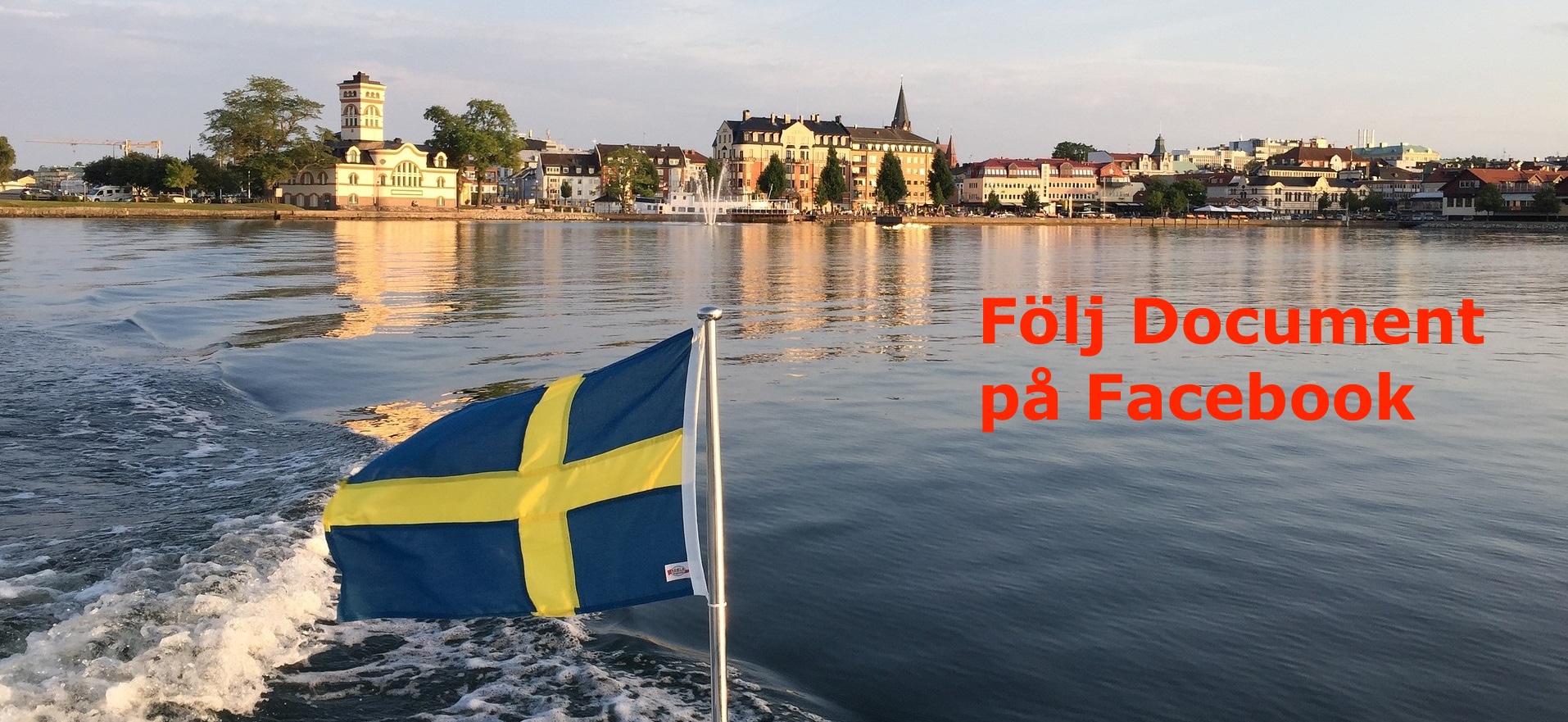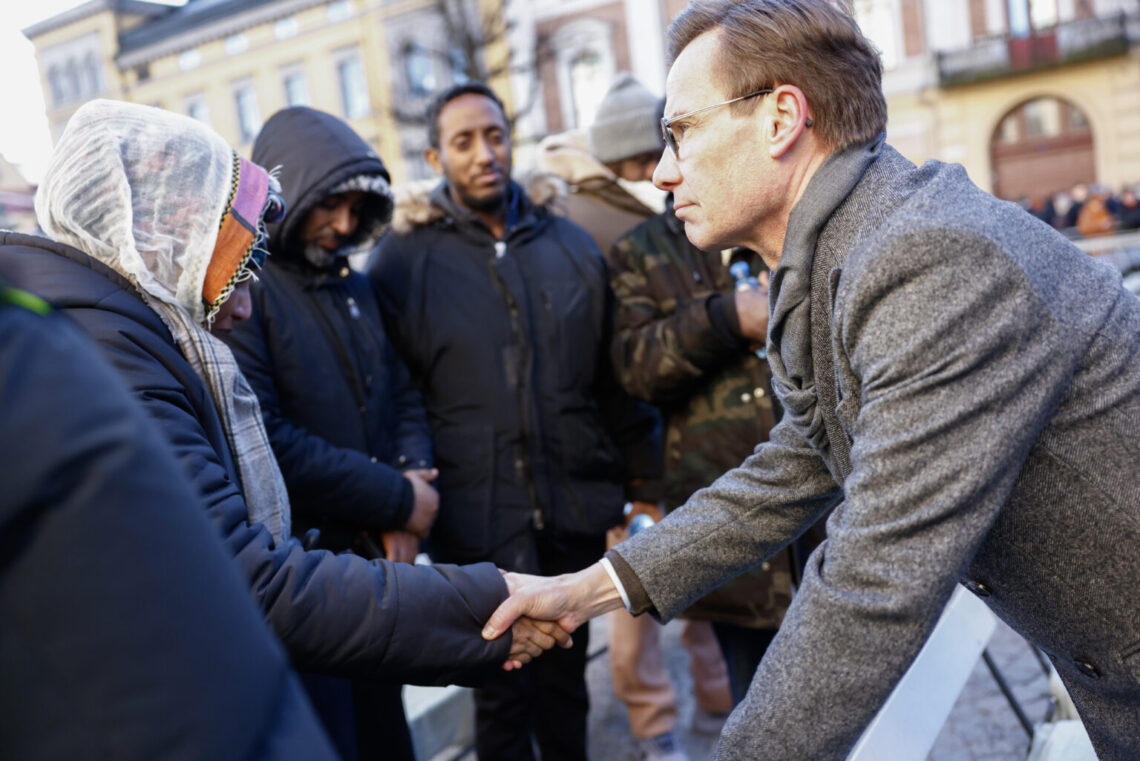There is no longer any doubt. Sweden has been transformed into a genome-polarised society where everything – even a mass shooting in which ten people are murdered – is about ethnicity, group affiliation and cementing the image of Sweden as racist.
Sweden was fundamentally changed on the afternoon of 4 February. It sounds like a cliché, and in a way, the Örebro shooting is one in a long line of shootings, explosions and all the other acts of violence that now afflict the nation on an almost daily basis. To be honest, few were surprised.
But it is different, thanks largely to media coverage. Or perhaps more accurately, a lack of coverage.
Well over a week after ten people were murdered on the Risbergska campus in Örebro and many more injured, the media has yet to publish the names of all the victims. At the time of writing, it looks like this on Expressen:
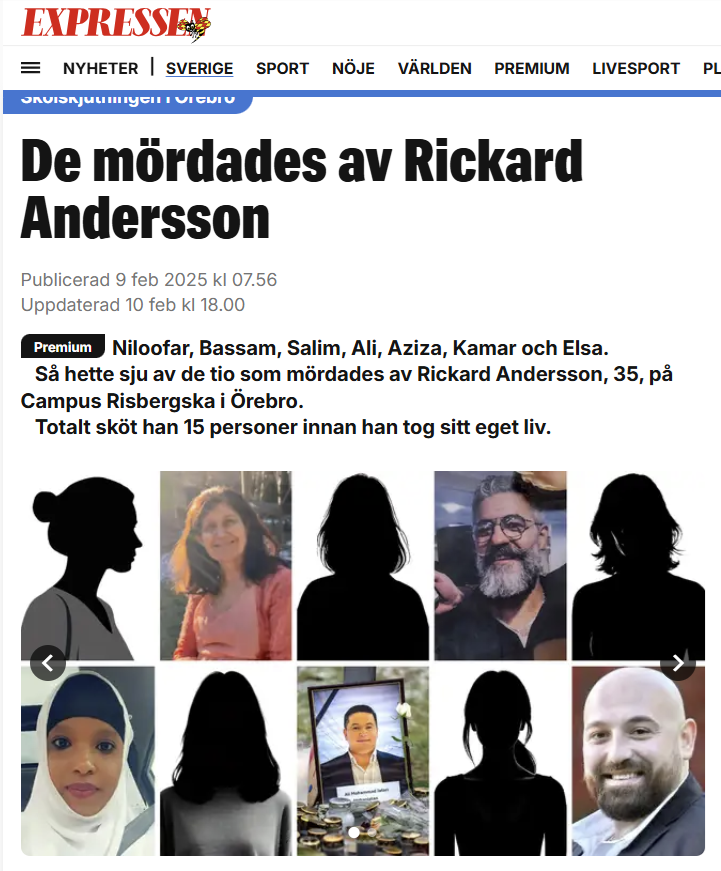
Illustration: Screenshot Expressen 2025-02-11. “They were killed by Rickard Andersson”.
Seven people with immigrant backgrounds, plus three without names. Why is that? That’s what Swedish media consumers have been asking themselves for a whole week. That it would be about “consideration” is hardly likely. After other attacks, the media has been quick to name the victims, even 11-year-old Ebba was published with her name and picture after the terror attack on Drottninggatan almost eight years ago.
We know that there are ethnic Swedish victims. Why isn’t that name, or those names, being publicised? What narrative do our politicians want to create, with the help of our media? The image of a racist act, even though such a motive most likely does not exist? If you go to a randomly selected adult school in Örebro, Borlänge or Stockholm today, the student composition looks exactly like this: A majority have an immigrant background. This is “the new Sweden”.
But Prime Minister Ulf Kristersson sees something else. He makes a distinction between the victims and the relatives, depending on their origin.
“Regardless of the outcome of the police investigation, this horrific event has aroused a particular fear and sense of vulnerability in many people with an immigrant background in Sweden. This is something we as a society must understand, respect and meet.”
So the Prime Minister’s heart aches a little extra for “people with an immigrant background” who are considered to feel “a particular fear and sense of vulnerability” and this regardless of what the police investigation comes up with? And society, that is to say you and I, must “understand, respect and meet” this.
When will we hear Ulf Kristersson explain that the daily murders and bombings that have transformed Sweden “have awakened a particular fear and sense of vulnerability in many ethnic Swedes”, and call on society to “understand, respect and meet” it? Probably at the same time as the first snowball fight is held in hell.
Swedish victims don’t count, they are nameless silhouettes. They don’t exist even if they do.
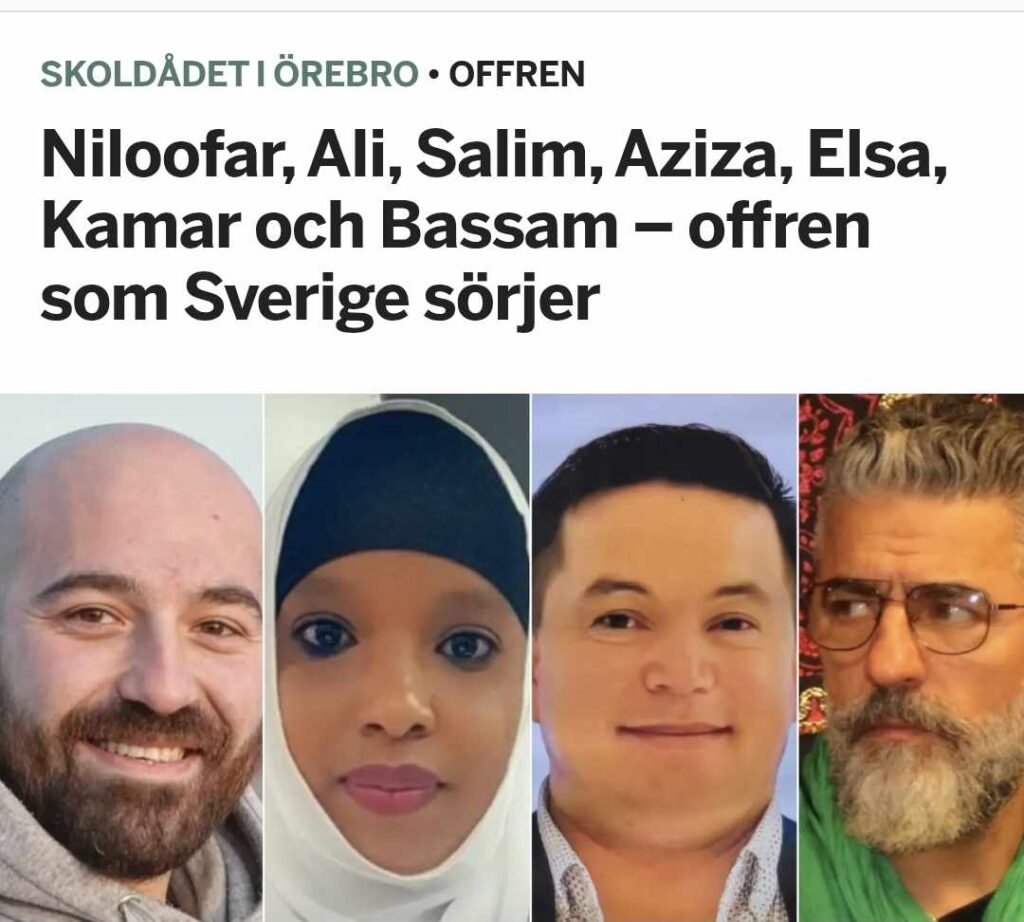
Illustration: Screenshot Omni 2025-02-12. “Niloofar, Ali, Salim, Aziza, Elsa, Kamar and Bassam – the victims mourned by Sweden”.
It wasn’t long before various fundraising campaigns were launched in favour of some victims’ families. One example is journalist Nuri Kino who, with the support of the organisation A Demand For Action (ADFA), started a fundraiser for Syrian Elsa Teklay. Three days later, SEK 500,000 has been raised.
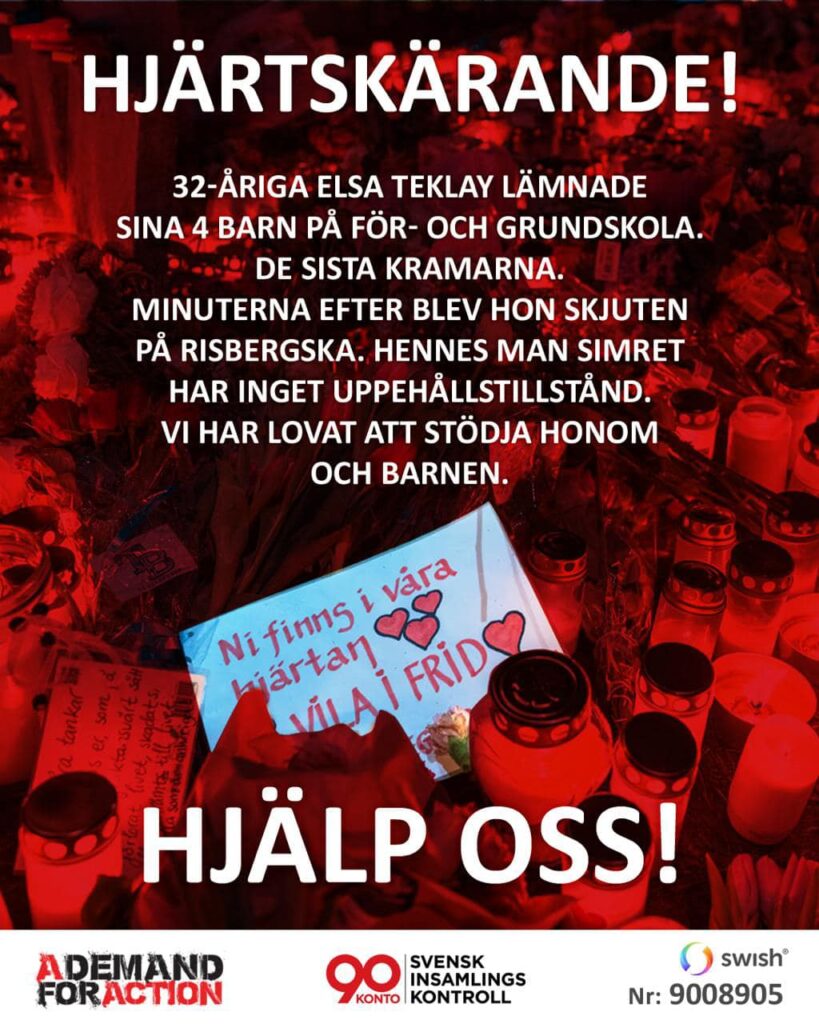
Illustration: Screenshot Facebook.
The fundraising for the family is undoubtedly worthwhile, their situation is a nightmare. But why is the knee-jerk reaction always to commit only to one’s own ethnic group? What financial support is given to those families who do not have driven compatriots with large contact networks and a so called “90 numbers” (an account number approved for fundraising) behind them? Who starts the fundraisings for the families of the faceless silhouettes? Probably no one, because we are not told who those children are, even though those families are also experiencing loss, grief and need.
If you don’t exist, your family doesn’t count either. That too has become clear in the past week. The media have interviewed outside ethnic associations and the Örebro mosque, where even one of the most notorious Sweden-haters has been given space to speak out in favour of Muslims and immigrants. Dagens Nyheter writes that the victims “died in a country that seems to hate people like them”. The image of the mass shooting as a racist act of terror carried out by “a Swedish Breivik” is apparently to be hammered into the Swedes.
The police may disagree, but what the police investigation finds doesn’t matter, according to the nation’s own prime minister.
A week after the mass shooting on Campus Risbergska, the realisation has sunk in for many: People with immigrant backgrounds are allowed to be afraid – ethnic Swedes are not. People with immigrant backgrounds are emphasised as victims – ethnic Swedes are not. People with an immigrant background are supported by their own – ethnic Swedes are not.
This is the situation in the nation that not so long ago prided itself on being a “humanitarian superpower” and where politicians and the media are now doing their best to turn the clock back to the time before the great wave of immigration in 2015. And with each targeted act of solidarity, tensions are rising between the individuals who together make up Swedish society. This does not bode well for the future.
